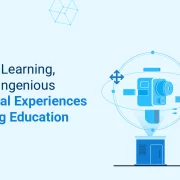
Top 10 Effective Methods for Soft Skills Training in the Workplace
Summary
This article discussed the top 10 methods for soft skills training for employees. These methods allow employees to practice and refine their communication and interpersonal skills in a safe and interactive environment.
Table of Contents:
- What is Soft Skill Training in the Workplace
- Top 10 Methods for Soft Skills Training for Employees
1. Conversation Simulations
2. Scenario-Based Learning
3. Story-Based Learning
4. Role Plays
5. Instructor-Led Workshops
6. Synchronous Online Soft Skills Training
7. Role-Modeling and Mentoring
8. Team Building Activities
9. Peer Learning and Collaboration
10. Assessment and Performance Tracking - Conclusion
What is Soft Skill Training in the Workplace?
Organizations have long known that their employees’ soft skills are just as crucial for business as their technical expertise. Soft skills like communication, teamwork, adaptability, and leadership are essential for harnessing productive work environments, enhancing employee engagement, and driving overall organizational growth. Soft skills training programs for employees empower them to take their performance to the next level.
Top 10 Methods for Soft Skills Training for Employees
1. Conversation Simulations
Conversation simulations are immersive training exercises that replicate real-life conversations and interactions. They provide employees with a safe and controlled environment to practice and refine their communication and interpersonal skills. These simulations often use interactive technology to simulate realistic scenarios, allowing participants to engage in conversations with virtual characters or avatars. By experiencing various challenging situations and receiving immediate feedback, employees can develop their ability to communicate effectively, empathize, and handle difficult conversations.
2. Scenario-Based Learning
Scenario-based learning involves presenting employees with realistic scenarios or case studies that reflect common workplace situations. Participants are tasked with analyzing the scenario, making decisions, and solving problems using their soft skills. These scenarios are designed to encourage critical thinking, decision-making, and the application of various soft skills in a practical context. By engaging in scenario-based learning, employees develop their problem-solving abilities, adaptability, and communication skills while understanding the consequences of their actions within a simulated environment.
Also Read: Scenario-Based Learning to Boost the eLearning Experience & ROI
3. Story-Based Learning
Story-based learning utilizes narratives or storytelling techniques to convey important lessons and principles related to soft skills. Stories have a powerful impact on human cognition and engagement, making them an effective tool for learning. Through compelling narratives, employees can relate to characters, empathize with their experiences, and gain insights into different soft skills and their applications. Story-based learning enhances retention and understanding, allowing employees to internalize and apply soft skills concepts in their work and interactions.
4. Role Plays
Role plays involve participants taking on different roles in simulated scenarios to practice and improve their soft skills. By assuming specific roles, participants can experience different perspectives and engage in realistic interactions. Role plays allow employees to apply their communication, empathy, problem-solving, and conflict-resolution skills in a dynamic and interactive setting. They provide opportunities for immediate feedback, reflection, and learning from their experiences. Role plays also encourage creativity and adaptability as participants adapt their behaviors and responses based on the roles they embody.
5. Instructor-Led Workshops
Instructor-led workshops provide valuable opportunities for employees to engage in interactive sessions, group activities, and role-playing exercises. These workshops facilitate hands-on learning, immediate feedback, and peer collaboration, enabling employees to enhance their soft skills through practical application.
6. Synchronous Online Soft Skills Training
Synchronous online soft skills training for employees offers a dynamic and interactive learning experience that combines the benefits of live instruction with the flexibility of online platforms. These sessions provide opportunities for real-time engagement, collaboration, and immediate application of soft skills. By leveraging the convenience and accessibility of synchronous online sessions, organizations can effectively enhance their employees’ soft skills, regardless of their location or time constraints.
7. Role-Modeling and Mentoring
Creating opportunities for employees to observe and learn from skilled colleagues or mentors can have a profound impact on their soft skill development. Pairing employees with experienced mentors who exemplify desired soft skills behaviors enables practical learning through observation, guidance, and feedback. Managers and supervisors should provide constructive feedback, recognize employees’ progress, and offer coaching to help employees refine their soft skills. This ongoing support promotes growth and fosters a culture of continuous improvement.
8. Team Building Activities
Team building activities provide an opportunity for employees to collaborate, communicate, and develop essential soft skills such as teamwork, leadership, and conflict resolution. Interactive team-building exercises and workshops enhance their interpersonal skills while fostering stronger team dynamics.
9. Peer Learning and Collaboration
Encouraging peer learning and collaboration allows employees to share experiences, insights, and best practices, contributing to improved soft skills. Platforms and tools that facilitate knowledge-sharing and collaboration, both online and offline, can enhance the learning experience and create a culture of continuous learning within the organization.
10. Assessment and Performance Tracking
Regular assessment and performance tracking help measure the effectiveness of soft skills training programs and identify areas for improvement. Utilizing performance metrics and feedback mechanisms enables organizations to track the progress of employees and make data-driven decisions to refine their soft skills training initiatives.
Note that before implementing any of these methods, it is crucial to conduct a comprehensive needs assessment to identify the specific soft skills requirements within the organization. Customizing the training content and delivery methods to address these needs ensures relevance and maximizes impact.
Also Read: How To Deliver Soft Skills Training To Sales Employees
Conclusion
Enterprise training in soft skills empowers employees to navigate change effectively, adapt to evolving market demands, and contribute to the organization’s long-term success. For employees, soft skills training enables personal and professional growth, boosts confidence, and enhances career prospects by equipping them with the necessary skills to thrive in diverse work environments.
Investing in soft skills training programs for employees is a strategic move that yields numerous benefits for both individuals and organizations. By adopting a comprehensive approach that includes methods such as online training, workshops, mentoring, and assessments, organizations can equip their workforce with the essential soft skills needed for success in today’s dynamic workplace
If your organization is seeking to enhance soft skills training through synchronous online sessions or explore comprehensive training solutions, Hurix Digital is available to consult and provide tailored expertise. Contact us at marketing@hurix.com to discuss your organization’s specific needs, and unlock the full potential of your workforce’s soft skills.

A highly enthusiastic and motivated sales professional with over twenty five years of experience in solution selling of training-related applications and services. Maintains an assertive and dynamic style that generates results. Ability to establish long-term relationships with clients built on trust, quality of service and strategic vision. Specializes in financial services, higher ed, publishing and government in the areas of learning and development.







